Skylight is a type of zenith lighting, where it is possible to optimize the entry of natural light into the environment. Due to its horizontality, the skylight illuminates up to eight times more than a window of the same size.
It is an opening in the building’s roof that allows the passage of light and, in some types, natural ventilation. In environments where it is not possible to install windows or in circulation areas such as corridors and stairs, the clear buoy can bring an interesting aesthetic appeal.

Despite the zenith lighting being closely associated with the architecture of modern houses, its use began during Ancient Europe, with the purpose of illuminating and alleviating the structural weight of the roofs of the great buildings of the time.
The use of skylights is an excellent alternative for environments that do not have or have few windows, such as stairs, corridors and halls. However, the installation of the skylight can be used in any environment, even in the bedroom, as long as a closing system is used to block the light when necessary.

Benefits
The skylight reduces the need for artificial lighting during the day and, consequently, there is a reduction in the cost of electricity in the building.
The air circulation promoted by the opening moves the cold air close to the floor and releases the warm air through the cover, providing a natural air circulation. The element is a great ally in cross ventilation planning.
Elements such as natural light and ventilation are inexhaustible resources, renewable and without cost, making the project well planned and rational, as well as a more sustainable and economical construction.
Types of Skylights
Fixed Skylight
This type of skylight allows only lighting, without providing ventilation to the place. It can be used on any type of roof, as long as it is correctly designed.

Skylight with Ventilation
In addition to ambient lighting, this type of skylight contributes to ventilation. Its use is generally common in spaces where there are no windows or that do not contribute to the ventilation of the place.
Installing a ventilated skylight in very high ceilings requires that it be opened automatically or by means of a hand crank that is within reach.
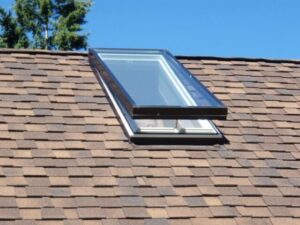
Polycarbonate-Aerogel Skylight
This material replaces the common polycarbonate in order to avoid time actions that lead to the yellowing of the piece. Polycarbonate-aerogel also makes the skylight more energy efficient than glass and can prevent overheating and excessive light problems.
Glass Skylight
This type of material is widely used in skylights, however it is necessary to be aware that with the passage of light, heat also passes through and can cause undesirable changes in the temperature of the environment.
Another point to be noted is with regard to privacy, the presence of taller buildings around the residence can favor visibility through the skylight. The use of curtains, higher quality glass or multiple layers can be adopted to solve this problem.

Tubular Skylight
The tubular skylight, also known as a light tunnel, is of the discrete type and has a light reflection system. Its external look is rounded and its interior is composed of a tunnel that allows lighting to reach up to 50m from the point where it entered. Its main function is lighting.
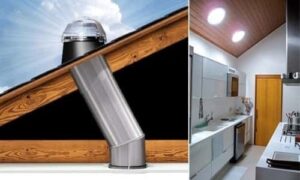
Skylight in Bathrooms
The bathroom is an environment favored by the entry of natural light, so that the skylight becomes a very suitable piece for these rooms. Even at night, after sunset, the skylight has a pleasant effect.
Skylight in the Bathroom

Skylight with Curtain
In some cases, the incidence of constant natural light from the skylight may not favor the environment, such as in bedrooms and living rooms. For this reason, a widely used solution is the placement of curtains to control the entry of light, also with automatic or manual control, as needed.
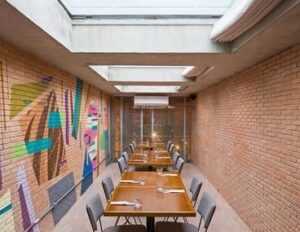
Skylight in Slabs
The slab skylight design promotes a very elegant ambience and can be used on both straight and slanted slabs. However, it is essential that the cover is designed for your installation. It is not recommended to cut the slab later, which will often require structural reinforcement, and should never be carried out without a technical report and structural project.
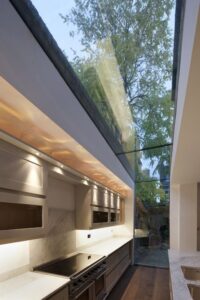
Skylight on Rooftops
Skylights can also be installed on ceramic tile roofs and, in these cases, they can be installed after the roof is completed, always taking care of the structure of the tiles.
Skylight with Roof Ventilation
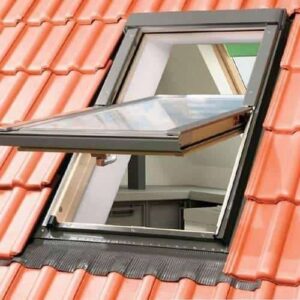
Skylight Balcony
Recently developed, this type of skylight can be used as a balcony, due to its opening system. Designed for skylights on sloping roofs, the system consists of a window where its leaves open to the outside of the roof.
Skylight Balcony
The lower window frame opens forward, creating a strong vertical barrier for the porch, and the rails move forward, creating a guardrail on both sides.
The top leaf of the window opens upwards at a 45º angle, creating the balcony space. The innovation promises to transform attics in a more elegant and bold design.
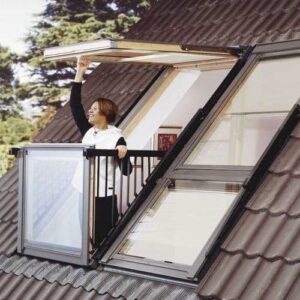
Installation and Care
The use of skylights should still be foreseen in the architectural design stage, as it influences several characteristics of the building and requires planning according to the construction system adopted and the element where it will be installed, being necessary to adopt measures in order to avoid infiltration and unwanted heating of the environment.
The use of the skylight requires care with its maintenance, such as the periodic verification of the seal against rainwater and special attention to the use of the environment, so that there is protection against the entry of light and generated heat. In addition to taking care of the internal temperature, so that there is no thermal discomfort in the building.
